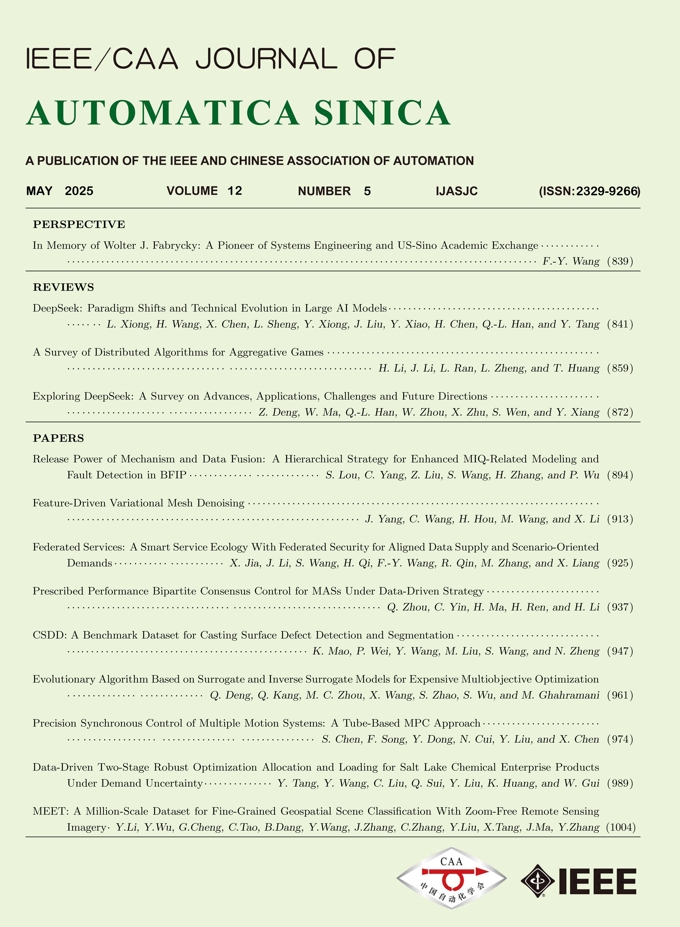 Volume 12
Issue 5
Volume 12
Issue 5
IEEE/CAA Journal of Automatica Sinica
| Citation: | Y. Cui, L. Cheng, M. Basin, and Z. Wu, “Distributed byzantine-resilient learning of multi-UAV systems via filter-based centerpoint aggregation rules,” IEEE/CAA J. Autom. Sinica, vol. 12, no. 5, pp. 1056–1058, May 2025. doi: 10.1109/JAS.2024.124905 |

| [1] |
L. Bottou, F. E. Curtis, and J. Nocedal, “Optimization methods for largescale machine learning,” SIAM Review, vol. 60, no. 2, pp. 223–311, 2018. doi: 10.1137/16M1080173
|
| [2] |
X. Yi, S. Zhang, T. Yang, T. Chai, and K. H. Johansson, “A primaldual SGD algorithm for distributed nonconvex optimization,” IEEE/CAA J. Autom. Sinica, vol. 9, no. 5, pp. 812–833, 2022. doi: 10.1109/JAS.2022.105554
|
| [3] |
J. Zhang, L. Pan, Q.-L. Han, C. Chen, S. Wen, and Y. Xiang, “Deep learning based attack detection for cyber-physical system cybersecurity: A survey,” IEEE/CAA J. Autom. Sinica, vol. 9, no. 3, pp. 377–391, 2021.
|
| [4] |
J. Li, W. Abbas, M. Shabbir, and X. Koutsoukos, “Byzantine resilient distributed learning in multirobot systems,” IEEE Trans. Robotics, vol. 38, no. 6, pp. 3550–3563, 2022. doi: 10.1109/TRO.2022.3178296
|
| [5] |
S. Jadhav and A. Mukhopadhyay, “Computing a centerpoint of a finite planar set of points in linear time,” in Proc. 9th Annu. Symp. Computational Geometry, 1993, pp. 83–90.
|
| [6] |
D. Comaniciu and P. Meer, “Mean shift: A robust approach toward feature space analysis,” IEEE Trans. Pattern Analysis and Machine Intelligence, vol. 24, no. 5, pp. 603–619, 2002. doi: 10.1109/34.1000236
|
| [7] |
X. Zhou, “On the fenchel duality between strong convexity and Lipschitz continuous gradient,” arXiv preprint arXiv: 1803.06573, 2018.
|
| [8] |
H. Mendes and M. Herlihy, “Multidimensional approximate agreement in Byzantine asynchronous systems,” in Proc. 45th Annu. ACM Symp. Theory of Computing, 2013, pp. 391–400.
|